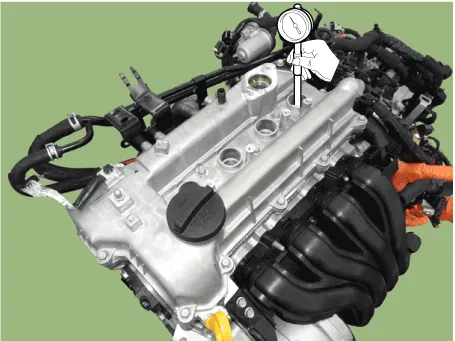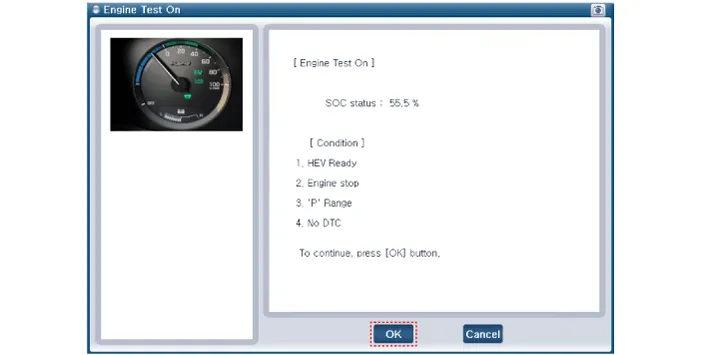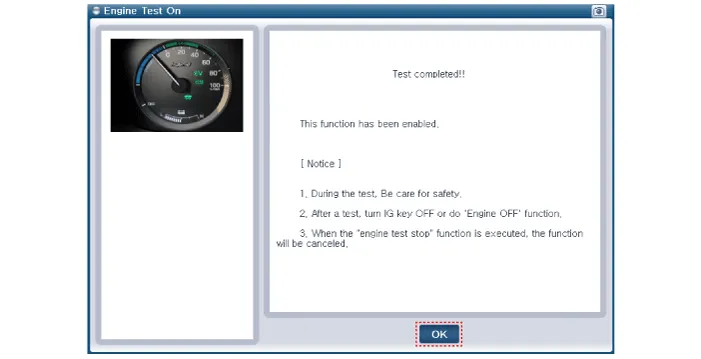Hyundai Ioniq (AE): Engine Mechanical System / Repair procedures
Hyundai Ioniq (AE) 2017-2022 Service & Repair Manual / Engine Mechanical System / Repair procedures
| Compression Pressure Inspection |
|
| 1. | Warm up and stop engine. Allow the engine to warm up to normal operating temperature. |
| 2. | Remove the air cleaner assembly. (Refer to Intake and Exhaust System - "Air Cleaner") |
| 3. | Remove the ignition coils. (Refer to Engine Electrical System -"Ignition Coil") |
| 4. | Remove the spark plugs. (Refer to Engine Electrical System -"Spark Plug") |
| 5. | Check the cylinder compression pressure.
|
| 6. | Reinstall the spark plugs.
|
| 7. | Install the ignition coil.
|
| 8. | Connect the ignition coil connectors and injector connectors. |
| 9. | Some DTC's may exist after the inspection test and may need to be manually cleard with GDS. |
Specifications Description Specification Limit General TypeIn-line, DOHC Number of cylinders4 Bore72.
Troubleshooting Symptom Suspect area Remedy Engine misfire with abnormal internal lower engine noises.
Other information:
Hyundai Ioniq (AE) 2017-2022 Service & Repair Manual: Mode Control Actuator. Specifications
S
Hyundai Ioniq (AE) 2017-2022 Service & Repair Manual: Auto Defoging Actuator. Repair procedures
Inspection1.Turn the ignition switch OFF. 2.Disconnect the auto defogging connector. 3.Verify that the auto defogging actuator operates to the open position when connecting 12V to terminal 3 and grounding terminal 4. Verify that the auto defogging actuator operates to the close position when connected in reverse.
Categories
- Manuals Home
- Hyundai Ioniq Owners Manual
- Hyundai Ioniq Service Manual
- Components and components location
- Body (Interior and Exterior)
- Engine Control/Fuel System
- New on site
- Most important about car
Copyright © 2025 www.hioniqae.com - 0.0175






